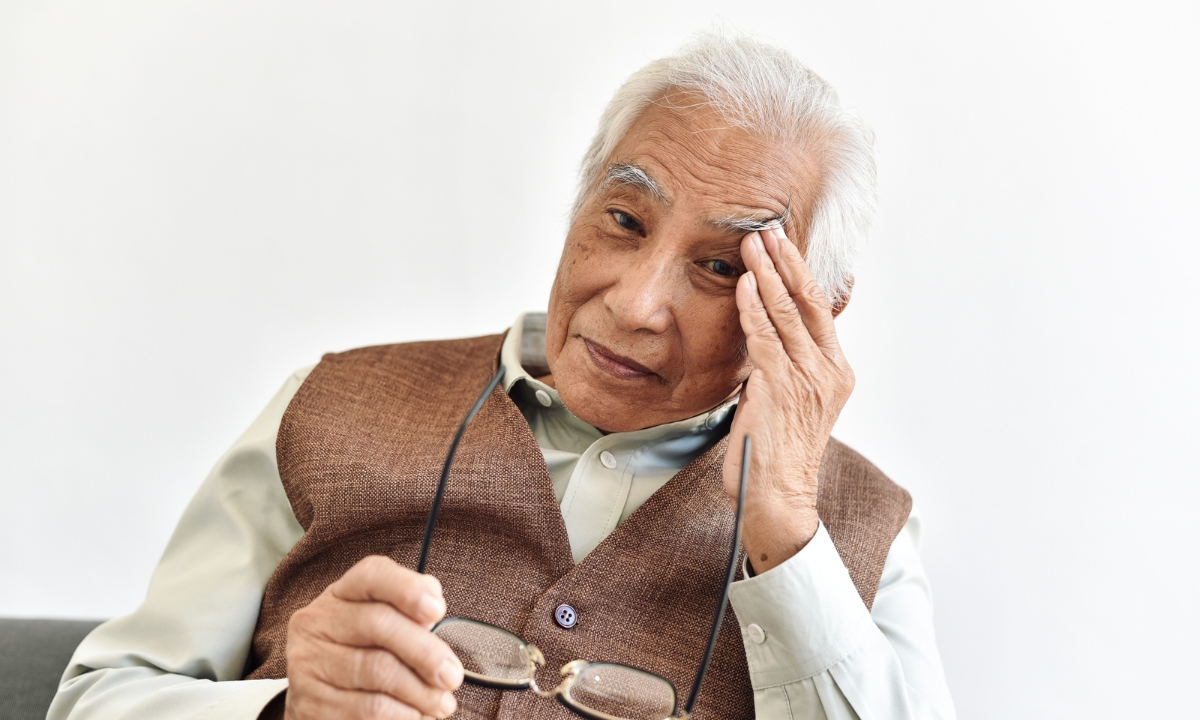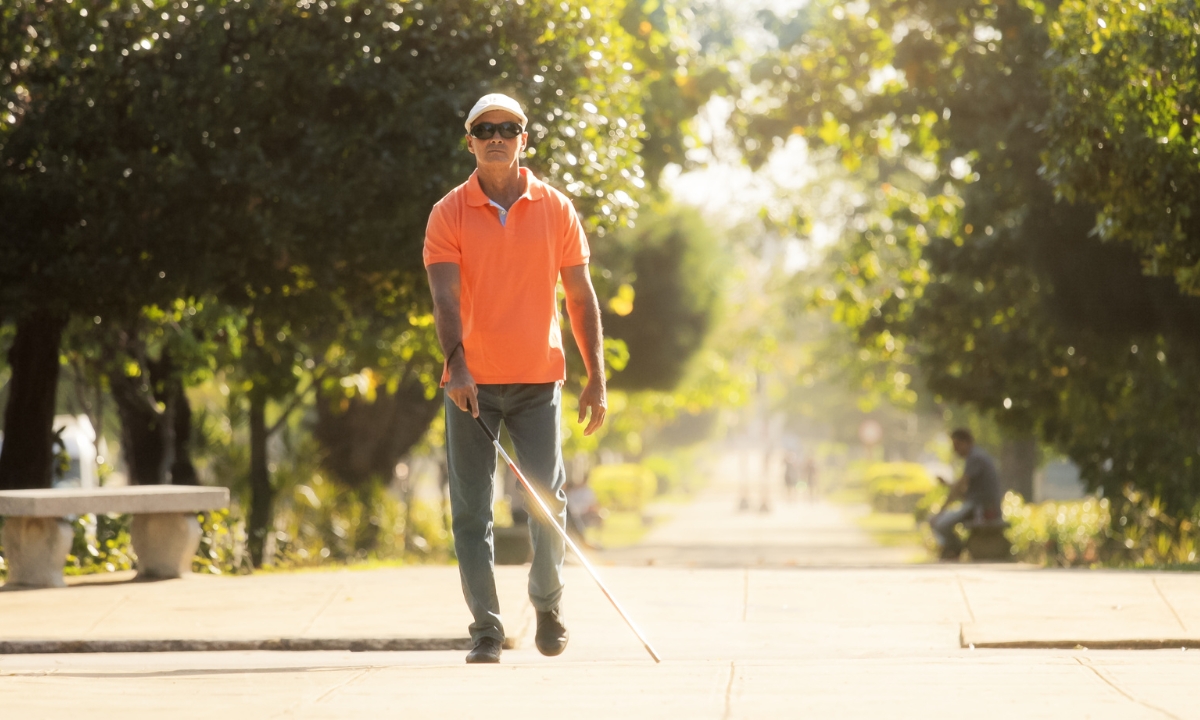Dealing with vision loss can be traumatic, but as we age, it’s something that we will all have to deal with. Whether it means something simple such as getting bifocals or something more serious, such as losing vision permanently, it’s going to take some adjustments. If your loved one is dealing with vision loss, what can you do? One of the most important steps to take is to make certain they can continue to live in their home safely. In some cases, this means removing hazards. In other cases, it means adding additional lighting or other safety measures. In other cases, if your loved one has lost all of their sight, it may be time to have difficult discussions about moving.
If your loved one wants to remain in their home for as long as possible, there are a few things you can do to help them. Reliant Home Care Services offers in-home care that can help your loved one remain independent while still getting the help they need. In addition to home care, there are some things you can help your loved one stay safe despite their vision loss.

Understanding Vision Loss
There are a number of different health conditions and other factors that can impact your loved one’s vision. This can include diseases and conditions that affect the eyes, such as glaucoma, cataracts, and macular degeneration. Other health conditions, such as diabetes, can also affect one’s vision if they’re not addressed. Injury can also result in vision loss.
One thing that’s important to realize is that vision loss isn’t an all-or-nothing condition. Some people lose vision in one eye but not the other. Others may lose some vision but still be able to see in bright light. It’s also possible to lose distance or peripheral vision. To fully ensure your loved one’s safety, it’s important to know what kind of vision loss they’re struggling with. Here are some of the most common types:
- Total blindness – A person is unable to see anything, including light.
- Legal blindness – To be considered legally blind, a person’s vision much be 20/200 or worse even with glasses.
- Low vision blindness – Those who can see some light and make out shapes but are still significantly limited have low vision.
- Partial blindness – This is defined as having some sight but still limited, especially in low light or when looking into the distance.
The impact of vision loss on daily life
If your loved one has any type of blindness, they will likely find it difficult to handle many daily tasks. They may not be able to drive, read, cook, or even safely navigate their surroundings. Many can still get around their home via memory – they know where their furniture, steps, and other hazards are, so they can still move around without too much risk. However, they likely won’t be able to tell if something is in their walkway or when something like a rug has shifted.
Home Safety Hazards for People with Vision Loss
There are many different safety hazards for those with vision loss. The most common hazard is tripping. Cords, loose rugs, unexpected items in the path, and uneven surfaces can easily trip up someone who has trouble seeing. They may also not see spills or pools of water caused by leaks or overflowing tubs or sinks.
Poor lighting is another hazard that can cause trouble. Your loved one may not be able to clearly see when using a knife in the kitchen, for example, or see a chair that has been moved out of place if there is insufficient lighting.
Fire hazards are another risk. Someone with poor vision may not see that a candle is lit or that they set a box of pasta too close to the stove burner. They may not see that their space heater has tipped over or that an old appliance sparks when plugged in. Other challenges include using products for things they were not intended for, such as picking up a small tube of hand lotion instead of toothpaste. They could also take the wrong medications.
The Role of a Caregiver
When your loved one has a caregiver, many of these concerns vanish. Your loved one will have someone there to help them with meals and other tasks, so you don’t have to worry about them cutting themselves or starting a fire. A care provider can help with medication and make certain they are using the right products. They can also identify and remove tripping hazards before your loved one falls.
Caregivers for those with vision loss often take on the role of handing errands. They do the shopping, pay bills, and handle all of the driving. They may also take on tasks such as housecleaning and yard maintenance. Sometimes this falls on one person, while other times, several loved ones are able to pitch in. Regardless of how many people are serving as caregivers, it’s important that everyone understands how vision loss is affecting your loved one and what safety measures need to be taken.
Home safety modifications
As a caregiver, you may find that your loved one’s home (or your home, if they have moved in with you) needs some changes to truly make it safe for those with low vision. This may include adding extra lighting and adding grab bars, of course, but it could also mean replacing the bathtub with a walk-in shower or replacing a few steps with a ramp. Making these modifications will help make your loved one feel more independent while also making you feel more confident in their safety.

Benefits of In-Home Care
While you and your family members may be able to provide some care for your loved one, you may find that they need more help than you can give. When you reach that point, it’s time to reach out to Reliant. Our in-home care providers understand how to help those who have vision challenges. There are many benefits to working with us.
First, we conduct a home safety audit for every patient. We will make a list of all of the risks we see in your loved one’s home and make suggestions for minimizing or eliminating them. This will help ensure your loved one is safe even when no one is with them.
Next, we can assist as much as needed. For some, one of our caregivers is there every day. They help these individuals with their daily activities, including taking medication, bathing, and eating. For others, one of our caregivers may be needed for the occasional respite care. This means we come in to give you a break so you can run errands and take care of yourself.
Working with an in-home caregiver provides many benefits, but there are two that typically stand out. The first is that we make it possible for your loved one to remain independent for longer. They can stay in the home they love and feel as if they still have a high quality of life. The second major benefit is for you: you know your loved one is safe. You have peace of mind knowing that you’ve done everything you can to make sure their home is safe for them and that a qualified caregiver is there when you can’t be.
Reach Out to Reliant Today
Is your loved one struggling with vision loss? Are you worried about their safety? Whether they have some vision or are now considered legally blind, you want them to be safe while still being as independent as possible. Reliant is here to help with both. Reach out today to learn more.

